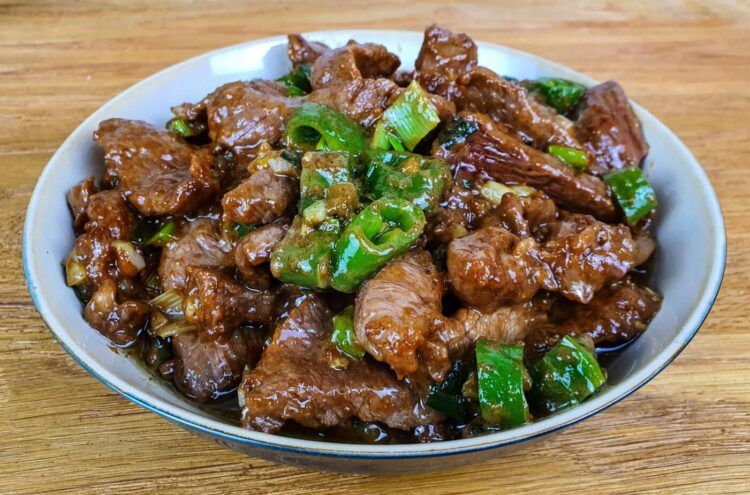Hunan beef is a term commonly used by Chinese people but hardly ever in our regions. In fact, I’m afraid it might not work well for search engine optimization on Google since absolutely NO ONE types “Hunan Beef” or “Cumin Beef” in their browser, haha. Too bad for them, it’s delicious and they don’t know what they’re missing.
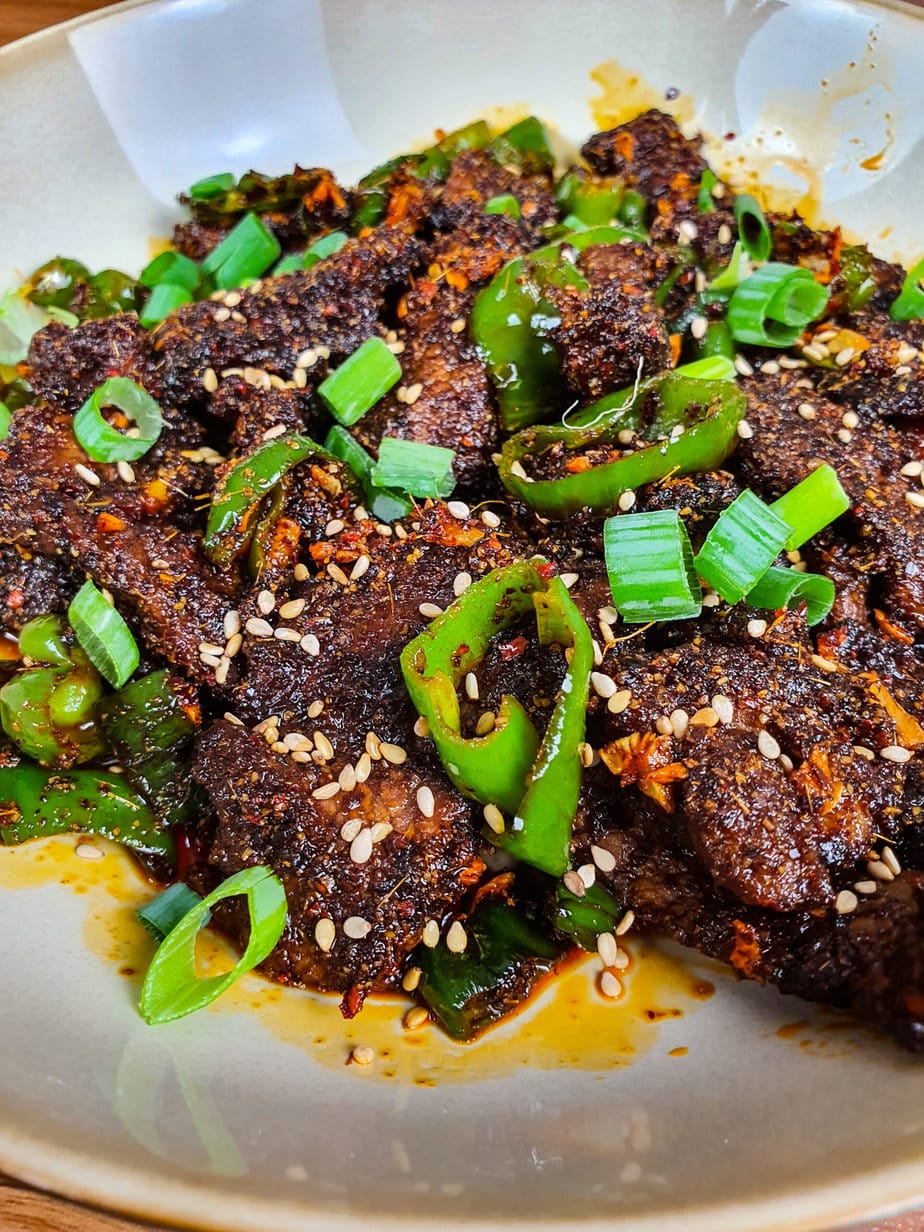
Where does cumin beef come from?
Hunan is a little-known Chinese province. This province is mainly known (in China) for its cuisine with very flavorful foods and tastes that were (according to legend) inspired by the observation of kebabs and other marinated meats from the Middle East.

Cumin beef is therefore very spicy due to the addition and use of very strong chili peppers, in combination with cumin and ginger.
Cooking technique used
This recipe employs the “shallow frying” technique, a method used in many traditional Chinese dishes and the secret behind many unique flavors. But don’t worry! It’s much less complicated than it seems.
The process for cumin beef is roughly composed of two steps: First, briefly frying the meat to produce a sort of soft breading very important for the texture, and then stir-frying it again with all the vegetables to really crystallize these flavors.
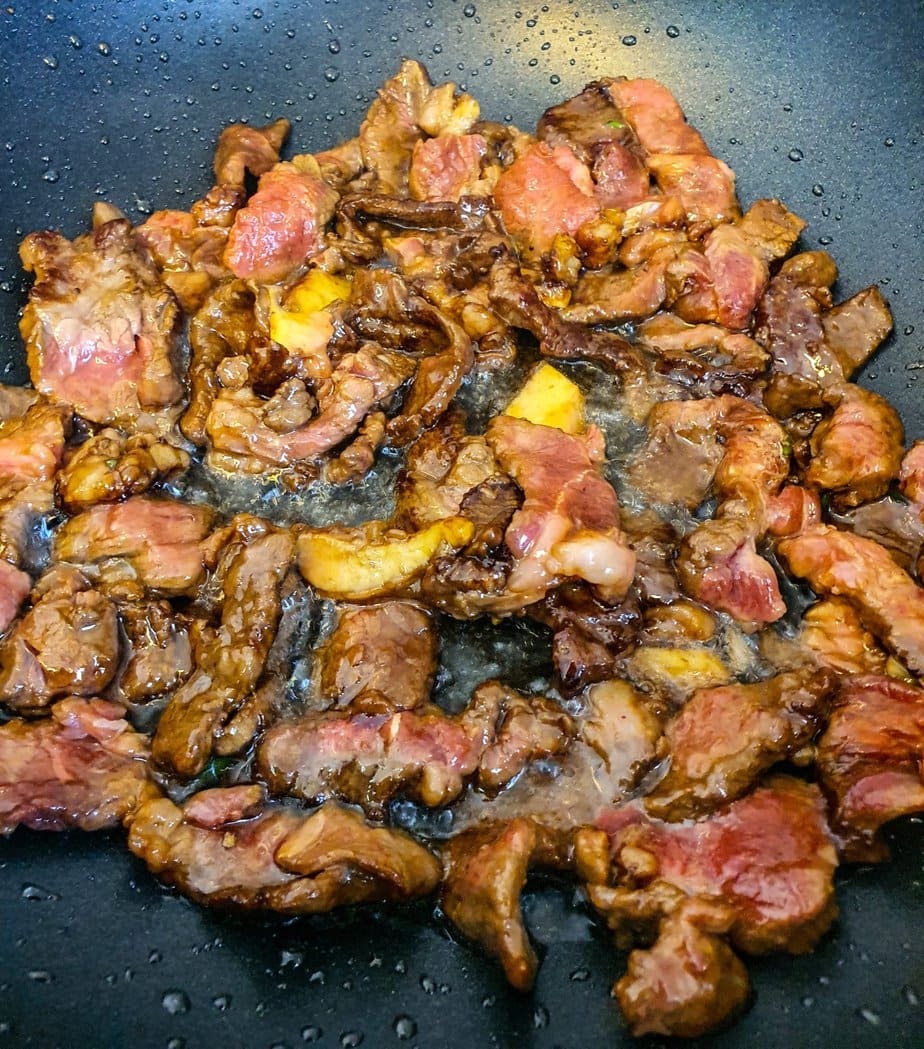
If you like this kind of dish, I think you’ll also really enjoy my beef with scallions as well as my beef with onions.
Both compensate for fewer spices with more flavors! If the different types of soy sauces scare you, come discover my complete article on the different types of soy sauces
The ingredients for cumin beef
Dark and light soy sauce: my article on the subject
Shaoxing wine: click here to learn more
These three ingredients add a lot to the taste and it would be a shame to substitute them. However, in the article about Shaoxing wine, I give some substitutes, and dark soy sauce can be replaced with Japanese “tamari” sauce
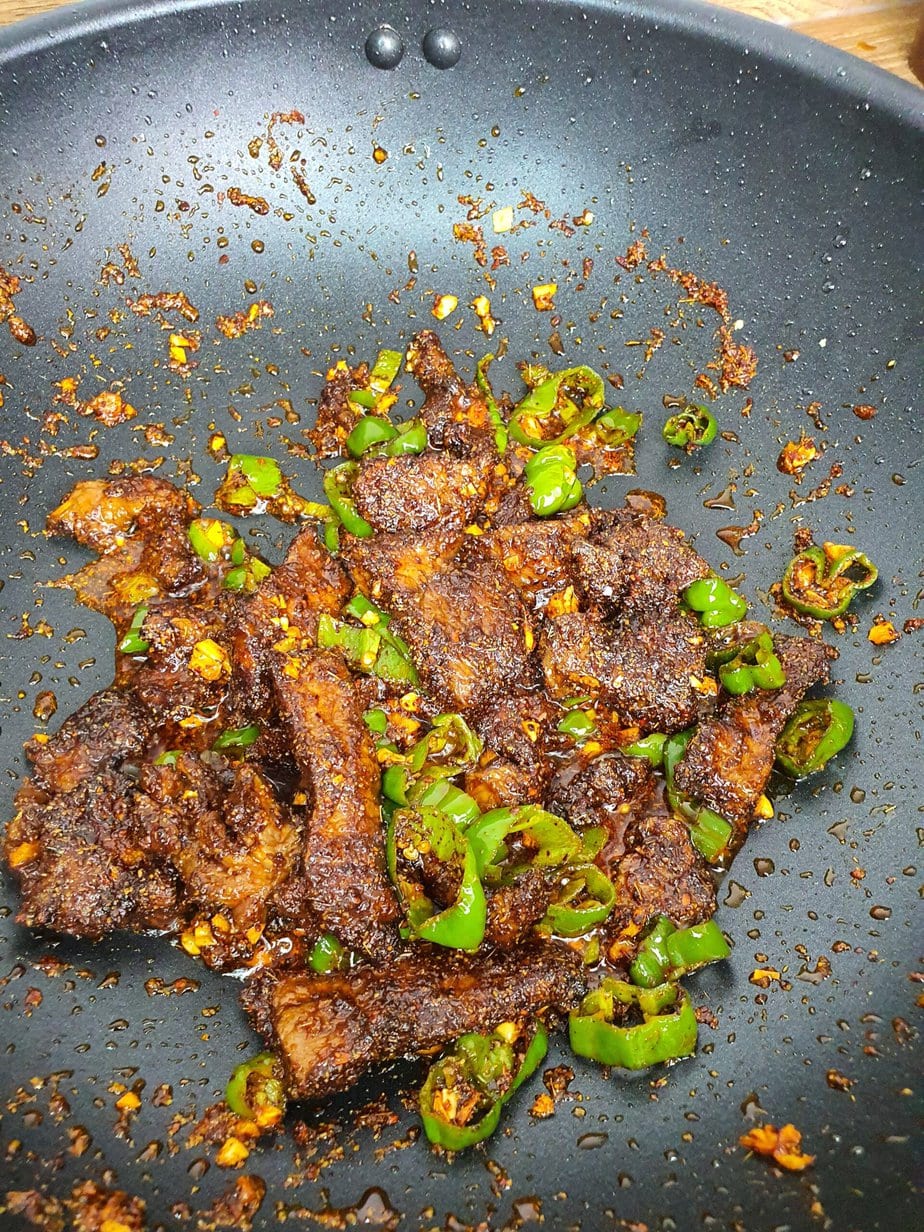
How to accompany cumin beef?
Personally, I recommend rice in all its forms. It’s the best accompaniment for the type of sauce/juice that cumin beef produces
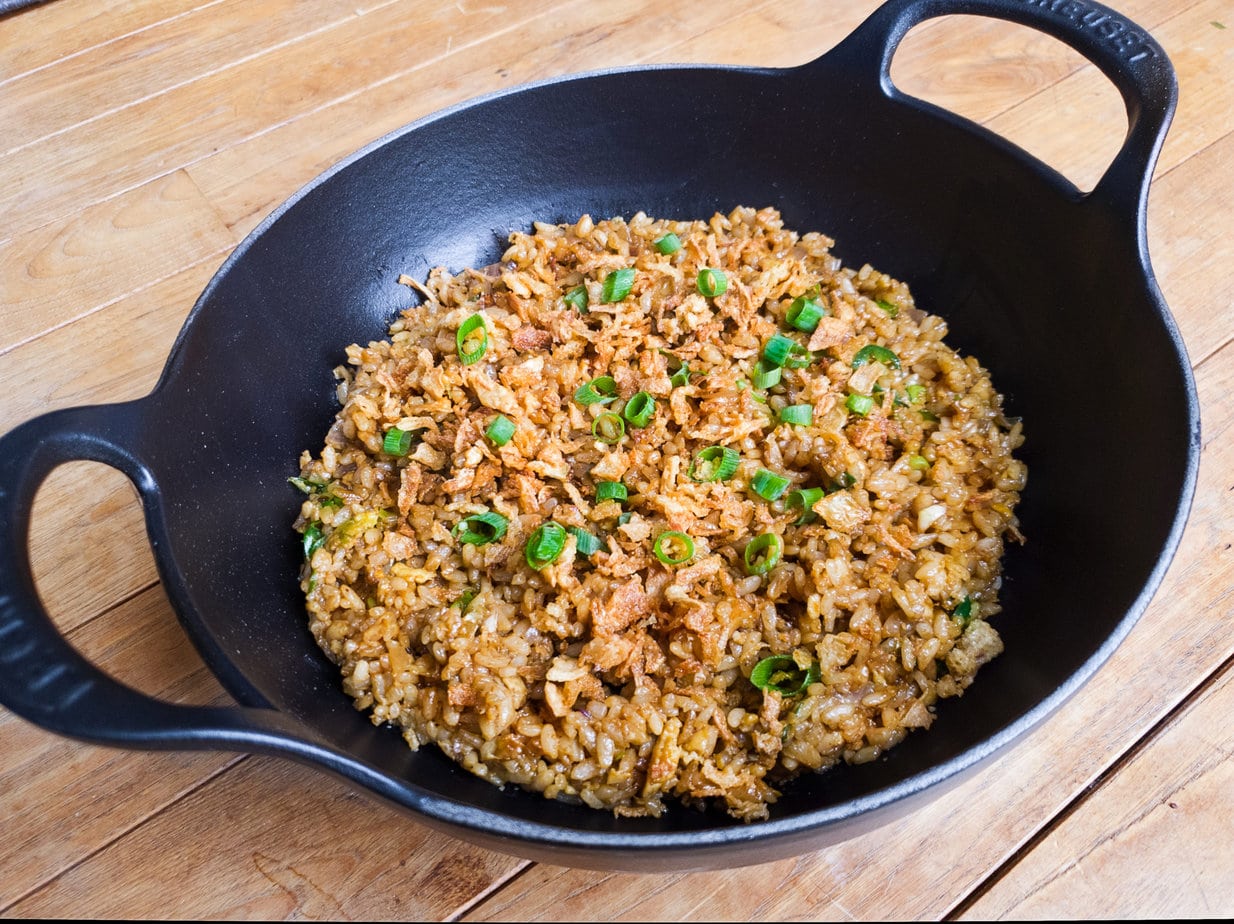
If you want something more neutral, I have two Cantonese rice recipes:
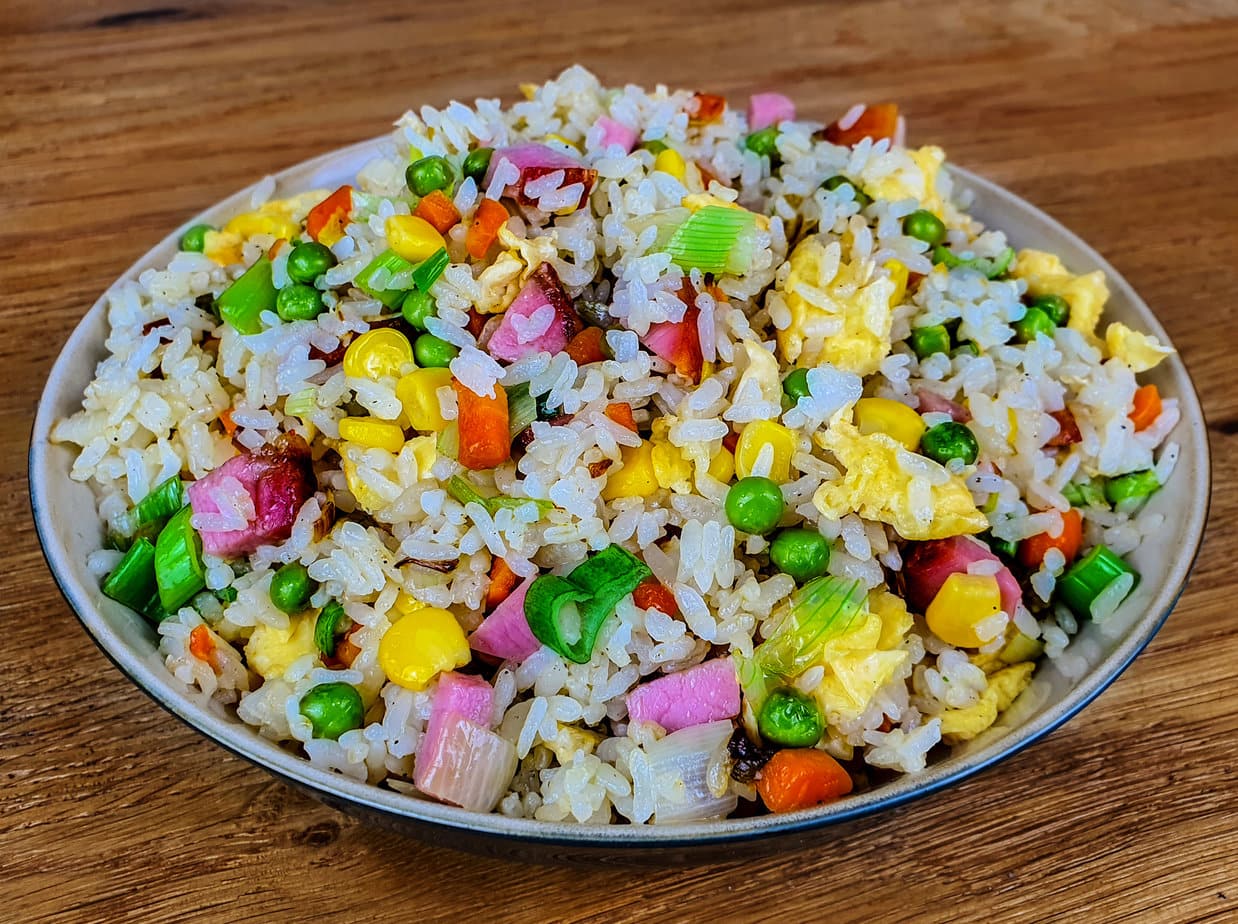
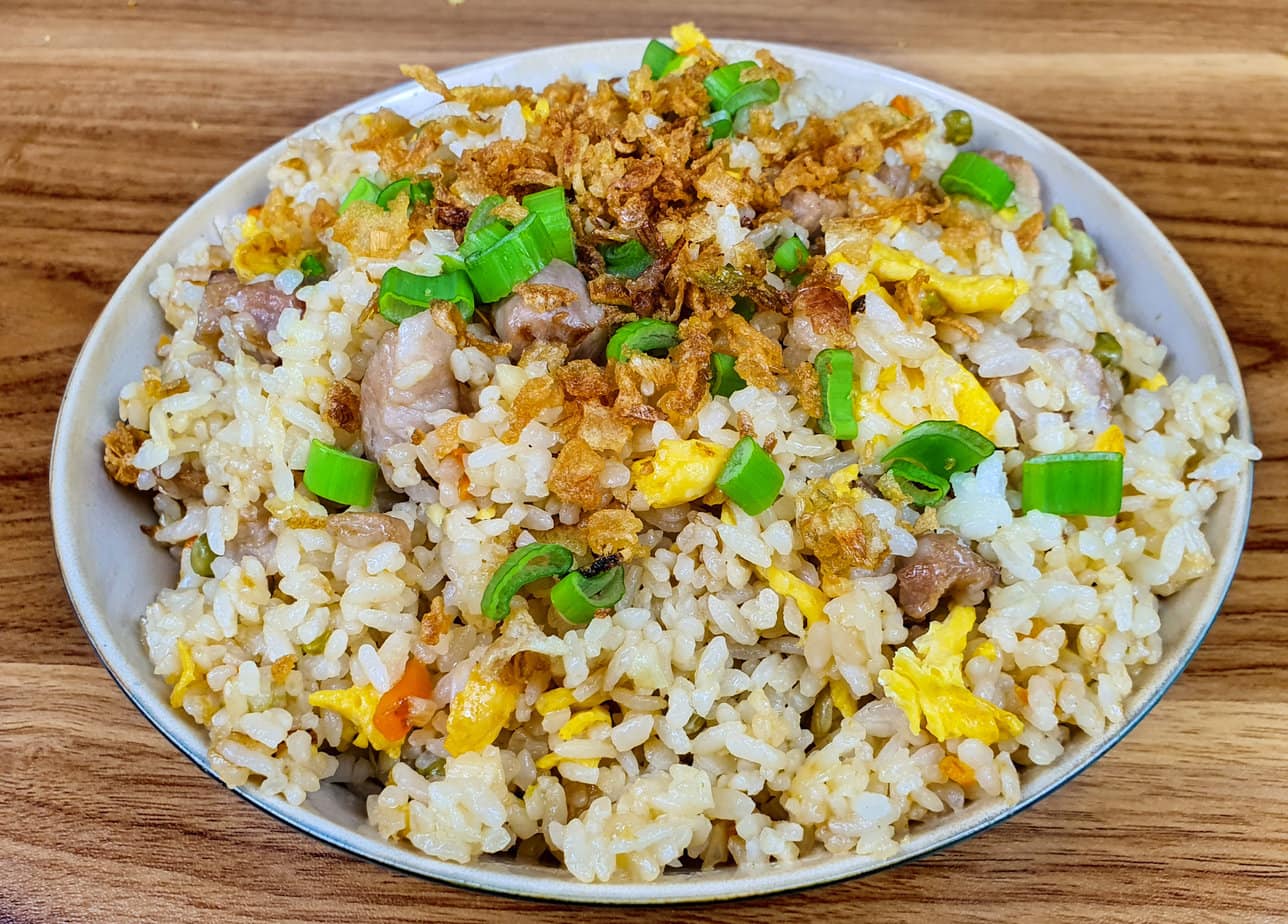
All three are very good options, but you can also simply opt for plain rice as an accompaniment. Especially if you have a rice cooker, it requires almost no effort and you’ll be well-satisfied afterward.
I recommend using sushi rice well washed before cooking (so that the grains separate well)
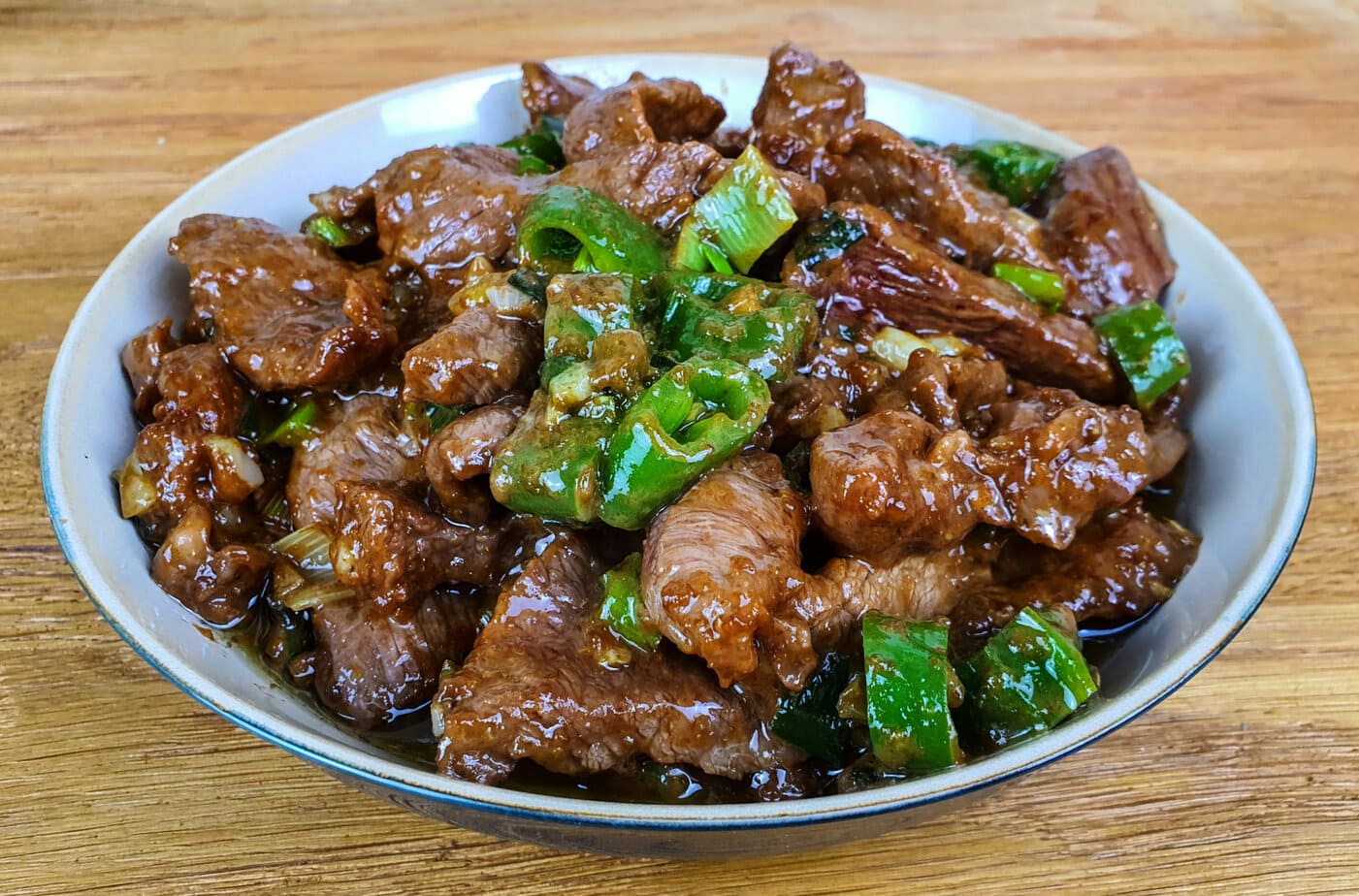
Simple Chinese Hunan beef
Ingredients
- 700 g of beef rump steak in very thin slices (surface: about 4×3 cm)
- 1 tablespoon of minced ginger
- 5 cloves of finely chopped garlic cloves
- 4 fresh red chili peppers, thinly sliced
- 4 teaspoons of chili flakes
- 4 teaspoons of ground cumin
- 1 pinch of salt
- 4 spring onions, only the green parts, very thinly sliced
Marinade
- 2 tablespoons shaoxing wine
- 1 teaspoon salt
- 2 teaspoons of light soy sauce
- 2 teaspoons dark soy sauce
- 2 tablespoons cornstarch
- 2 tablespoons water
Instructions
- Marinate the beef for 10-15 minutes
- Heat a good amount of oil in the wok (2cm) to 140 degrees
- Add the beef in 2 batches and mix well for 3-4 min max
- Set aside the beef and discard three-quarters of the oil from the wok
- Add garlic, ginger, chili, cumin and pepper: stir-fry for 2 min
- Put the beef back in the wok and stir-fry for 2 min.
- Incorporate the spring onions, mix for 1 min and it’s ready
- Optional: season with a little sesame oil
